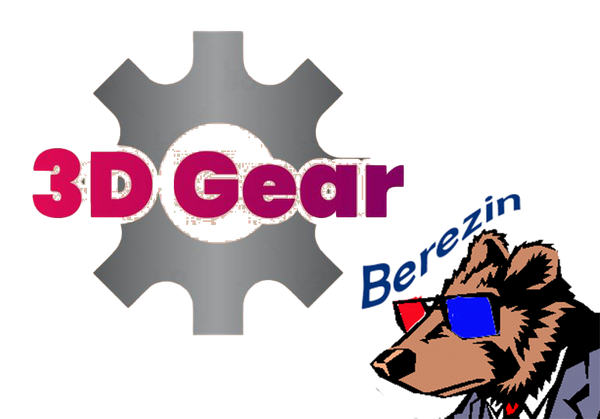Directions for Printing a stereo card on one sheet of paper
By David Lee
The key to doing this successfully is making an easel that is set up correctly. Three different methods for doing this will be discussed. One set of two easels will work for two of the methods, and the other way takes another single easel. I will give you the exact dimensions of the easels that I use, and you can either use these dimensions or design your own based on your own needs.
Two Easels-One enlarger
I will start with the set of 2 easels for making a stereo print with either one or two enlargers. The 2 easels in the set are almost identical.
1. Cut a piece of matboard for the bottom (A) - 10.5 x 16 inches.
2. Cut a piece (B) - 10.5 x 2 inches - glue it to the first piece at the top edge so that 3 sides are contiguous.
3. Cut a piece (C) - 10.5 x 13 inches.
4. Cut a hole in (C) the size you want the (half) image to be. Mine is 3 inches high x 2-15/16 inches wide.
5. The hole in (C) must be positioned exactly. Use the 13" dimension as the height. The top of the hole is 2.75 from the top of (C). The right side of the hole is 2-5/16 from the right edge of (C).
6. Butt the top edge of (C) against (B) and tape across the edges where the 2 meet, forming a hinge.
7. Cut 2 strips of photographic paper approximately 1 inch wide and 10 inches long.
8. Glue them to (A) so that they will correctly position a piece of photographic paper when it is butted up against their edges in the dark. Do this by placing one of them parallel to the top edge with its bottom edge 1.5 inches down from the hinge. The other should be parallel to the right edge with its left edge 1.5 inches from the right edge of (A).
9. You can put a piece of duct tape sticking off the end of the bottom so it will be easy to lift up in the dark.
10. The other easel in this set is exactly the same as the first except that the hole is moved to the left exactly 3 inches, leaving a space between the images of 1/16 inch.
If you are using one enlarger:
1. Place the negative for the right image in the enlarger and focus the image over the hole in the first easel, cropping and sizing it as you please. If you can put push pins in your base board use them to keep the easel in place, if not use tape.
2. After you get the exposure and contrast (or color balance) the way you want them, print as many of them as you want. You can make 2 on an 8 x 10 sheet. After you expose the first one, rotate the paper 180 degrees and expose the second.
3. Save the last test as a reference for the other half of the image.
4. Put all of the exposed but undeveloped sheets in a separate safe box.
5. Place the left negative in the enlarger, do not change the height or the focus (if you try to refocus you may change the size of the image).
6. One of the hardest things is getting the second half positioned correctly. Do your tests on new sheets of paper.
7. As you do each test for exposure and contrast gradually change the position until you get it exactly right.
8. If you are moving the easel horizontally or vertically, be sure to put straight edges against two of the sides for reference and so you can move in one dimension at a time.
9. If you have a rotation error, put a push pin through the easel in the middle of where the image will be and turn it slightly in the appropriate direction.
10. After you get everything just right, expose the left half on one of the sheets which had previously been exposed with the right image and see if it is exactly the way you want it. If so expose and develop all of them.
If you are using two enlargers:
(Now that I think about it there is no real advantage in using 2 enlargers except that you can print both halves at the same time and you get to see a finished image before making 30 (or whatever) exposures of one side.)
1. The first 2 steps for using one enlarger also apply when using 2 enlargers.
2. Then place the left negative in the other enlarger with the left easel on the base board. The hard part is getting the second image exactly the same size as the first. It will take a few tests as you gradually get closer, then position it as you did in steps 5, 6, and 7 above.
3. Everything else is the same.
